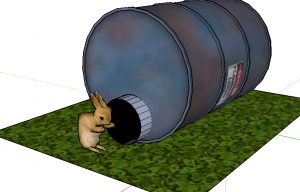The opposition is a mix of all sorts of people. In my case, it’s a mix of family, friends, co-workers, and the at-large community. At the same time, I have co-creators in each of those categories as well.
Before I rant on how I go about converting people with opposing ideas, it’s important to know that I do this passively all the time. It’s never an active duty of trying to change them or a want to change them. They have to want to change themselves. After that, I only serve as a guide pointing out paths and destinations that I visited and how they get to the same place.
Passive Conversions
It’s much like passive income. As a side note, passive income are assets that build up over time. For example, if you grow a plant from seed, nurture the plant, and get it to the point of having seeds, you now have more seeds to grow more plants. This is more active, but it can be passive if the soil is prepared and the seeds self-sow themselves or if the plant is perennial. It grows back year after year while providing for our needs and Natures.
To passively convert people is much of the same techniques as planting a seed. It starts with telling them about your story. Those that are interested will find ways to find you and build a relationship. That’s all it takes. For people with opposing views this often leads to arguments and goes nowhere. In that case, it becomes more active. It’s important to remember that you’re not trying to change them. They have to change themselves.
Converting the Opposition
When I first wanted to garden, my parents never understood how I would make a living from doing it. I didn’t know either, but I believed I could find a way. For a short while they were right, and didn’t want me to waste my life growing food. In my eyes, they opposed my passions and dreams. It didn’t matter what I said; it never changed what they believed about my ambitions.
I made the right choice in ignoring their criticisms. I found a job, but I still didn’t convince them about the many reasons why we need to garden. One summer at the school we had a bumper crop and nobody was there to harvest and use it. At the time, I wasn’t actively cooking so I gave it away to family and friends so it wouldn’t go to waste.
In one evening, the vegetables got used and those who spoke out against me gardening are now inviting me to garden for them.
More than One Way to Communicate
It’s often that we forget that actions speak louder than words. The act of giving away the abundance from a garden spoke louder than any word that I have ever spoken to anybody that has not agreed with what myself and my friends are trying to accomplish. I believe that more of these simple acts of love and kindness will crush all the arguments we have with each other and bring us back to the table of good food and delightful discussions.

